You’re not alone if you’ve searched for a magic solution to grow a beard. Many men, plagued with a thin or patchy beard, have made it their mission to find an answer to their beard growth issues.
And, for many, Minoxidil is just such a solution and a minoxidil beard just what they were looking for.
Minoxidil, a drug originally used to treat high blood pressure (and it still is), enhances hair growth, both on the scalp and face, with many studies to back it up. It can turn a patchy beard into one worthy of envy, with long-lasting results.
Here’s a closer look at Minoxidil, what it is, and how you can use it to bring your beard to its full potential.
First things first: What is Minoxidil?
A good place to begin is, well, from the beginning, i.e., what is Minoxidil, anyway?
It all began in the 1950s when Minoxidil was introduced as a drug to treat high blood pressure.
Minoxidil is considered a hypersensitive vasodilator; vasodilators are medications used to dilate (open) blood vessels. They prevent muscles in the walls of your arteries and veins from tightening and narrowing.
Table of Contents
As a result, blood flows more easily through blood vessels. Because the heart doesn’t have to pump as hard, blood pressure is reduced.
Minoxidil was and still is, prescribed to hypersensitive patients whose blood pressure isn’t controlled by standard drugs.
One of the side effects of Minoxidil is that it causes hair growth in different areas of the body, including the face. By 1988, the FDA approved Minoxidil as a hair-growth product, and it was marketed under the name of Rogaine.
How it works remains something of a mystery, even to scientists, but in the most fundamental sense, Minoxidil works by prolonging the anagen phase of hair cells and growth. Anagen is the growth phase of hair growth, which also includes:
The catagen phase

This is considered a transitional phase in which hair follicles shrink and detach from the dermal papilla, which is a structural formation located in the upper layer of the skin. The dermal papilla provides nutrition, via the blood, to hair bulbs.
The telogen phase
The telogen phase is the resting phase of hair growth and lasts about three months. About 10 to 15 percent of hair is in the telogen phase at all times. While old hair rests, new hair enters the growth phases.
The exogen phase
The exogen phase is part of the resting phase, and it’s characterized by the shedding of old hair while new hair continues to grow.
Minoxidil and beard growth
Minoxidil, as mentioned, can spur hair growth on all parts of the body, including your beard and scalp. But a common misconception is that it revives hair growth on your face the same as it does on our head.
Men who have thinning or patchy areas on their beard aren’t “balding” on their faces like men experiencing thinning and shedding hair on their scalp.
Minoxidil stimulates the follicles already on your face. When applied to thin areas of facial hair, Minoxidil helps to develop a more uniform, healthy-looking beard.
The types of Minoxidil for beard growth
The two common types of Rogaine for beard growth come in liquid or foam.
Rogain Topical Solution (Liquid)
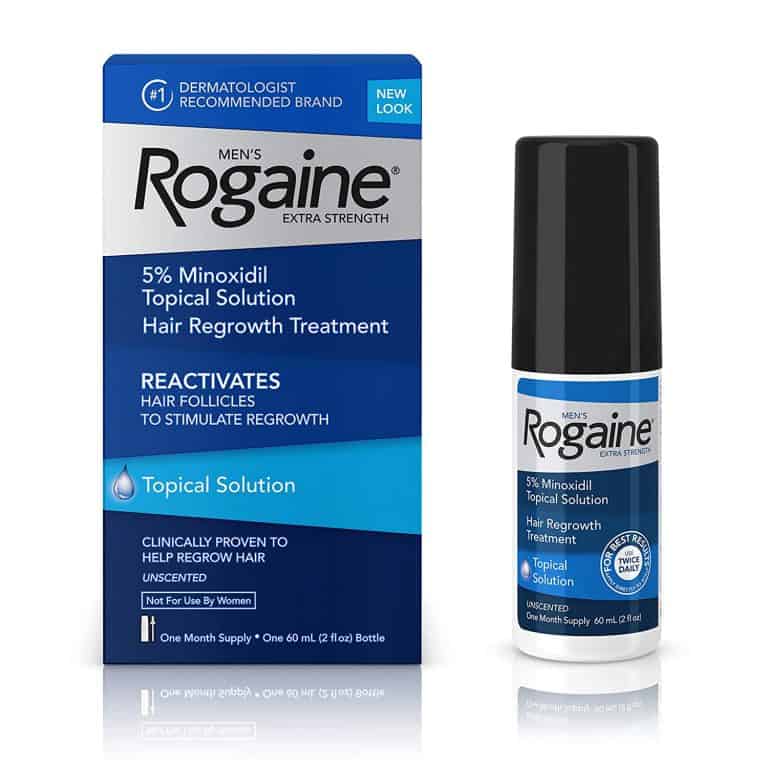
What stands out about this product
- It is an extra-strength product
- You should see results within three months
- It is affordable compared to some hair loss products
Minoxidil liquid is the original form of application and comes in a 5% Extra Strength Rogaine version for men.
You can apply it twice a day – and should for best results – and should experience facial hair growth within three months of first applying it, although results vary by individual.
One of the advantages of minoxidil liquid is that it costs less than the foam version, but it takes longer to dry. Some users also say that the liquid feels slightly greasier on hair.
Rogaine also makes a 2% version for women, who can apply it twice a day on their scalps.
Pros
- East to apply
- Very potent product
- Reactivates dormant hair follicles
- Ideal for targeting hair thinning on top of the head
- A lot of buyers get positive results
- Some buyers do use the product in other areas and enjoy good hair growth success
Cons
- Not suitable for women
- Hair loss can start again if you discontinue the product
- Might not work for front baldness
Rogaine Topical Aerosol (Foam)

What stands out about this product
- It includes 3 months supply
- Contains high quantities of Minoxidil
- Ideal for growing thicker or more dense hair
- See results within 3 months
Rogaine Foam is a popular version of Minoxidil for beard growth. It’s more expensive than the liquid version, but some users report that they experience positive results more quickly when using it. A lot of buyers also tried it on beards then reported that it did, in fact, increase their hair growth rate, and helped them cover some bald patches.
Another plus is that the foam dries in about half the time as the liquid. Even just saving that kind of time helps to justify its (higher) cost.
Pros
- Suitable for various balding or hair thinning areas
- Very easy to use
- The foam doesn’t drip or cause messes
- It is a safer product compared to many others
- Ideal for growing thicker hair
- You can style your beard as normal since the product doesn’t look oily
- A lot of buyers did use it to get a fuller beard
Cons
- Not intended for frontal head baldness
Spectral.BRD beard (nanoxidil)

While Rogaine is a common and effective way of developing a thicker, fuller beard (and Minoxidil is FDA-approved), a product called Spectral.BRD is gaining a lot of traction in beard growth circles.
The key ingredient in Spectral.BRD is nanoxidil, which is very similar to Minoxidil but doesn’t have potential side effects.
The primary difference between the two lies within their molecular structures. Nanoxidil has a greater molecular weight than Minoxidil because it contains one less carbon chain. The heftier molecular weight means it absorbs more efficiently into the skin.
Spectral.BRD was developed by DS Laboratories – which are part of the Miami-based DS Healthcare Group – and which also can lay claim to its unique nanosome delivery system.
The latter enables key ingredients to penetrate deeply into the skin and allows for the continuous release of active ingredients to produce longer-lasting results.
Those ingredients are encapsulated into liposomes that penetrate deeper into the skin because of their smaller size.
Several studies prove the efficacy of the nanosome/liposome system, including this one undertaken in India.
Spectral.BRD has several ingredients that can help users develop a thicker, healthier beard, not the least of which is adenosine. Scientifically speaking, adenosine increases thymidine uptake, which helps induce hair follicle development from the epidermis.
Adenosine also helps increase hair shaft diameter, which contributes to the overall thickness of your beard. Studies show that adenosine is similarly effective as Minoxidil 5% for stimulating hair growth. It also helps to increase the anagen phase of hair growth.
Spectral.BRD contains many other ingredients that help produce a thicker beard while eliminating those areas of patchiness that prevent whiskers from reaching their true potential, including:
Caffeine

We’re not talking about the same stuff that gives you a needed kick-start in the morning, but rather about caffeine extract. When used topically, caffeine extract stimulates facial and scalp hair growth while counteracting protein that suppresses the growth of hair cells.
Biotin
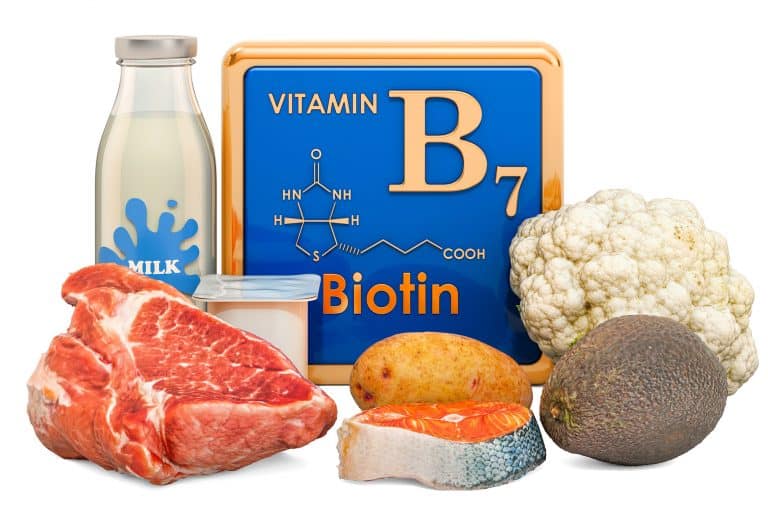
You’ll find biotin in many hair growth products, and a daily biotin supplement may increase hair growth production after 90 to 180 days. A biotin deficiency can cause alopecia, the loss of hair from some or all areas of the body.
Biotin is a type of B vitamin that can make your hair grow at a faster rate. Biotin also makes your nails and skin healthier. If you have a beard, then biotin may make your beard grow faster.
Biotin is an over-the-counter supplement, so it’s easy to purchase online or in stores. You can find it alone or mixed with other vitamins in a supplement.
Research shows that biotin supplements are safe for most people to take. However, if you have diabetes, then you should be careful about taking biotin supplements. If you have diabetes and want to take a biotin supplement, talk to your doctor about the right dose for you.
Piroctone olamine

The primary benefit of piroctone olamine is that it increases the number of hairs in the anagen phase. Many users predict noticeably thicker hair after using piroctone olamine.
In order for minoxidil to work on you it must be applied directly onto your skin. You can either use a beard oil that contains Piroctone Olamine or simply apply some olive oil on top of where you want the hairs to grow. If you are using an oil then make sure that it has Piroctone Olamine in it because this ingredient will help prevent any irritation that might occur when applying minoxidil directly onto your skin without first applying an emoll.
Copper peptides
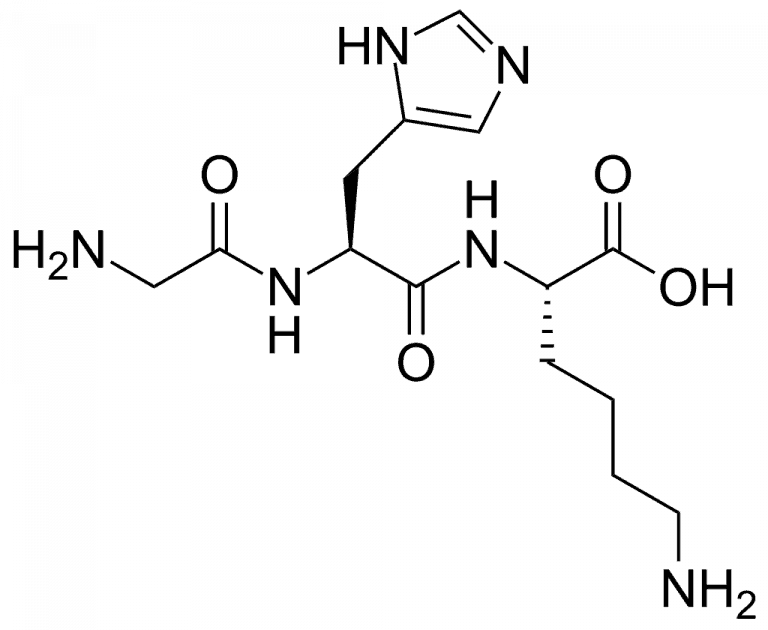
Copper peptides increase hair follicle size, stimulate hair growth, and reduce hair loss.
Copper peptides are used in a number of products for skin care, but are also found in hair loss prevention products. The reason for this is that it has been shown to increase the tensile strength of collagen, which is a critical part of your hair and skin
Castor oil
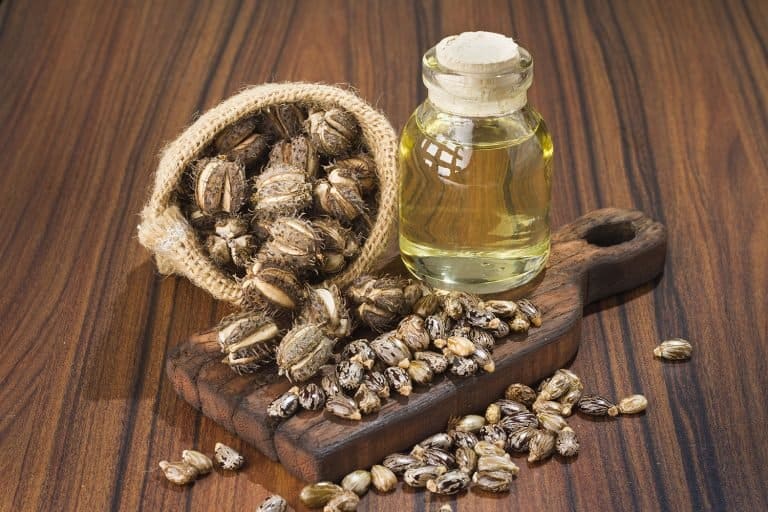
Castor oil contains ricinoleic acid, an Omega-9 unsaturated fatty acid that restores moisture in the hair.
When used in conjunction with castor oil, minoxidil for beard growth will cause you to see significantly thicker facial hair. Castor oil is known to help with hair growth because it contains ricinoleic acid and omega-9 fatty acids. These nutrients stimulate blood circulation and improve the health of your hair follicles.
You can make your own beard oil by mixing two parts of a carrier oil, such as jojoba or sweet almond, with one part castor oil. You may also add in a few drops of essential oils, which are used to add scent and help the ingredients penetrate into the skin.
To use beard oil, spread a small amount onto your palm and massage it into your beard and facial hair. If you have long facial hair, you may need to use more to fully coat all of your hair.
Rosemary oil

One of rosemary oil’s many benefits is that it promotes better blood flow to hair follicles, which is necessary for them to survive.
The reason rosemary oil works so well for growing beard hair is because it’s a natural DHT blocker. DHT, or dihydrotestosterone, is a hormone produced by your body that causes hair loss. When you use a natural DHT blocker like rosemary oil, you can help prevent hair loss and encourage new beard growth.
Hyaluronic acid
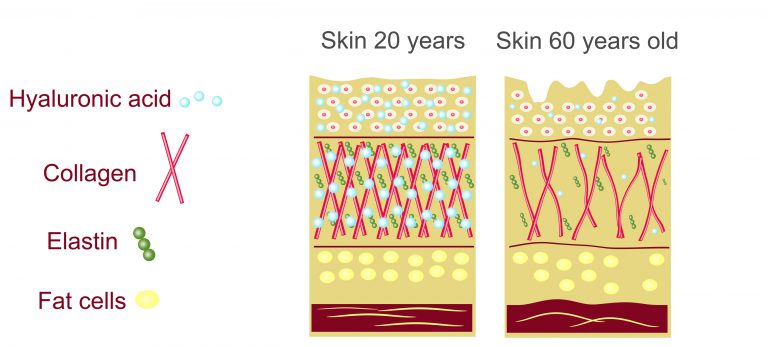
Hyaluronic acid benefits hair growth by adding moisture to hair follicles and the skin underneath. It can also increase the diameter of hair strands.
Another one of Spectral.BRD’s many benefits are that it’s easy to use.
It comes in a serum form, and you apply six to eight drops of it to the affected area and then massage it into your beard and skin.
You don’t rinse it off after application, and you should apply it twice a day.
How to apply liquid Minoxidil to your beard in 5 easy steps (A simple, illustrated guide)
Using Minoxidil to help grow a thicker beard requires discipline and patience. Don’t expect to see results immediately, and don’t become discouraged when it seems that nothing is happening.
That said, here’s the how-to of applying liquid and foam minoxidil:
1. Wash your face thoroughly

Washing your face is a crucial first step in the process before applying liquid Minoxidil.
We recommend using a quality face wash or cleanser rather than the same bar soap you use for the rest of your body.
Common bar soaps tend to strip your face of its natural oils, which leads to excessive dryness and include harsh chemicals that irritate the skin.
One product we really like is the Ursa Major Fantastic Face Wash. It’s packed with naturally-derived ingredients that won’t irritate the skin.
Make sure to take the time to thoroughly wash your face. Rub your wash or cleanser into all areas of the face while using circular motions with your fingers.
2. Measure the amount of Minoxidil

Measure out 1 ml of Minoxidil with the included dropper. The general recommendation is to use no more than 2 ml a day, or two doses, evening and night. The second application should be at least 8 to 12 hours after the first.
3. Applying the liquid
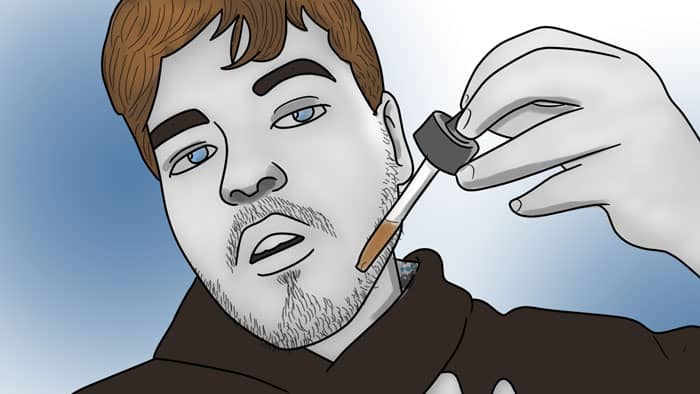
Begin by putting small drops onto areas of the face where you’re growing a beard. Concentrate first on the areas where patchiness is most evident. Keep applying it to your face until the dropper is empty.
4. Rub it in
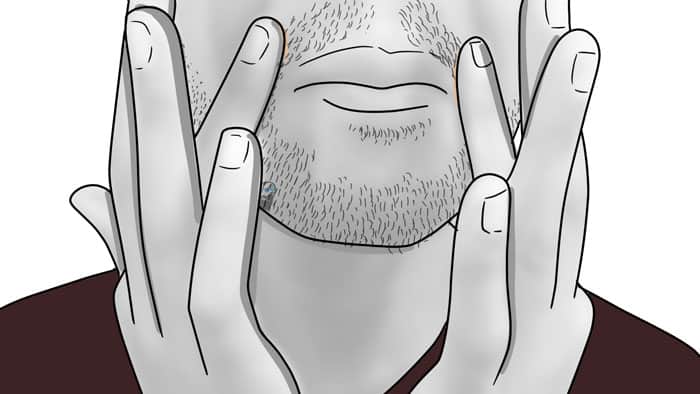
Use two fingers, or the applicator if you prefer, to rub the solution gently down to the skin with a light amount of pressure. There’s no need to apply heavy pressure for the solution to get absorbed into the skin.
5. Wash your hands

Once you’ve finished, wash your hands thoroughly with soap until all of the excess minoxidil solutions are gone.
How to apply foam minoxidil in 5 easy steps (A simple, illustrated guide)
Applying minoxidil foam isn’t much different than applying liquid:
1. Wash your face thoroughly
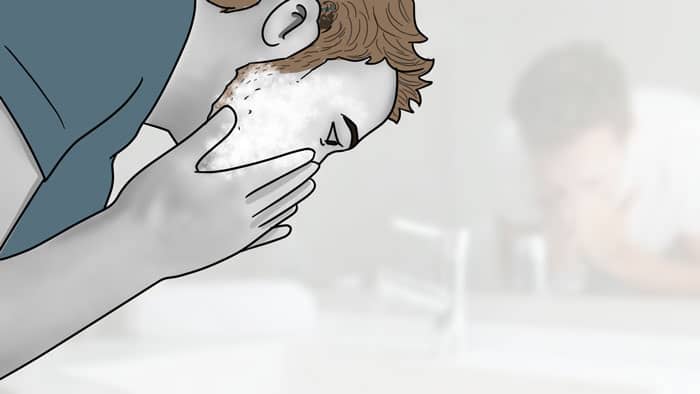
Again, we recommend that you use a face wash or cleanser meant for the job, and not the same bar soap as you use for the rest of your body.
Before applying minoxidil, make sure that you’ve washed your face and beard area thoroughly, so that there aren’t any traces of dirt or oil left behind. This will ensure that the minoxidil absorbs as well as possible and doesn’t clog your pores.
2. Rinse your fingers with cold water
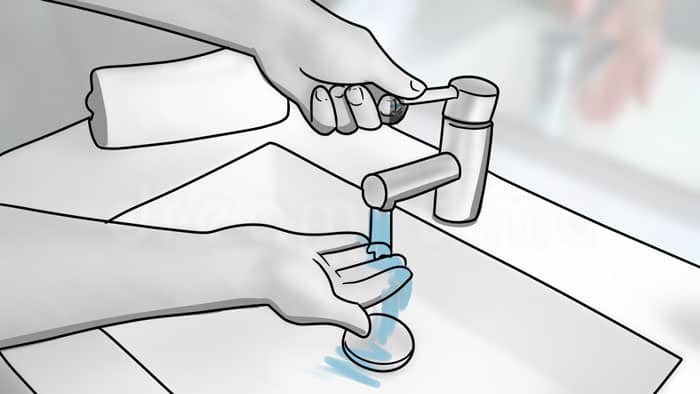
The foam will dissolve too quickly if you dispense it on warm hands. Instead, make sure they’re nice and cool.
3. Dispense the foam into your hands by tipping the can upside down

Do this, so the can’s head faces the ground. Use only enough foam as you’d need to fit into half the container’s cap – which is approximately 1 ml.
4. Use your other hand

The one you’ve cooled down, to apply the foam to your beard area, focusing on areas of patchiness at first.
Repeat until you’ve used all of the foam.
You don’t need to rub it in with great force. As long as you get it onto the skin and rub it in gently, the skin will absorb the minoxidil solution.
5. Wash your hands so that none of the solutions remains.
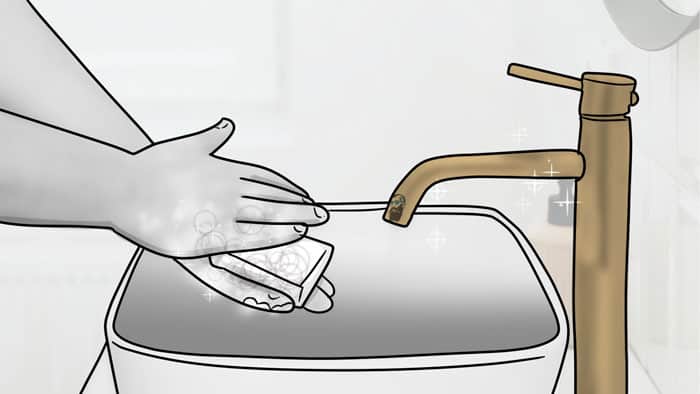
Some other thoughts about applying Minoxidil
You should apply Minoxidil, whether liquid or foam, twice a day unless instructed otherwise. Most men apply it in the morning and then at bedtime.
You should leave it in for at least four hours; after that, you can rinse or wash your face and apply a moisturizer if needed. But you don’t have to rinse it off if you so choose.
As mentioned previously, you should wait at least eight hours between minoxidil applications.
A common question concerns how long does Minoxidil take to work on your beard.
The bottom line is that, in most cases, you won’t see results for three to six months. You can stop using it after six months if you’ve experienced significant results.
But many men continue applying Minoxidil for up to a year; others may notice results before three months. Results vary from individual to individual, which is perhaps the most important thing to remember.
Another important question pertains to what happens to your beard after minoxidil treatments cease.
Do all the gains you’ve made, i.e., a thicker beard, disappear?
While some say the new growth falls off – if you hear it from a hair transplant expert, don’t be surprised – the majority of men say they’ve continued to have a thick beard for a year, or more, after discontinuing minoxidil treatments.
The rate of new growth may start to slow, and the shaft diameter may be slightly reduced.
The hair that’s likely to fall off after minoxidil treatments stop is vellus hair. Vellus hairs are fine and wispy, and often referred to as “peach fuzz.” These hairs contain very little pigmentation and are very hard to see, especially from a distance.
The hair that won’t fall off, at least immediately, is called “terminal” hair. Terminal hair is thick, pigmented, strong, and fully mature. Vellus hair becomes terminal hair when it matures but can fall off once minoxidil applications stop.
Minoxidil side effects: What to know
As effective as Minoxidil is for helping to create a thicker beard, it’s not perfect, i.e., there are potential side effects of which you should be aware:
Dry skin
Dry skin is a more common side effect when using minoxidil liquid. Some users report itching, skin redness, and other not-too-serious side effects.
Shedding
Shedding isn’t necessarily a side effect in a negative sense, but it’s most often part of the process of hair growth. That is, it’s new hair pushing out the old, and it’s something you may notice in the first several weeks of using Minoxidil.
So, don’t be alarmed if some hair falls out in the early stages of minoxidil use.
Lower blood pressure
True, Minoxidil is a drug used to treat high blood pressure, so it’s natural to assume that your blood pressure will lower if you use it, even topically.
But make sure that your blood pressure doesn’t dip too low, and you shouldn’t use Minoxidil in place of your regular blood pressure medicine.
Weight gain
Don’t be alarmed; you won’t blow up like a balloon after you start taking Minoxidil. But some users report slight weight gain, although there’s not necessarily a direct correlation.
Any subsequent weight gain can be the result of many other factors not pertaining to Minoxidil.
Acne
A less common side effect of Minoxidil is that it may cause acne – especially if you’re biologically prone to acne. Minoxidil tends to dry out the skin, and dry skin may lead to acne for some people.
The good news is that you can use moisturizers and acne products while using Minoxidil, and a good diet can help reduce acne flare-ups as well.
Fatigue
Another less common side effect of Minoxidil is fatigue. You may feel tired or sluggish, but there’s no reason to panic unless those feelings persist. In some cases, cutting back your use of Minoxidil may alleviate those side effects.
Dizziness or light-headedness
You may experience some dizziness and light-headedness after you start taking Minoxidil. But, again, there’s no real cause of alarm unless the symptoms persist.
Dark circles under the eyes
This is a minor side effect, for sure, but you can minimize it with a concealer or vitamin C.
Heart palpitations
Heart palpitations represent a more troubling side effect of Minoxidil. Reduce your dosage if you experience this side effect for more than two weeks – if they continue, make sure to check with your physician before continuing further use.
Minoxidil 2% vs. 5% vs. 10%
Products containing Minoxidil come in various concentrations, i.e., the percentage of Minoxidil included in them.
The higher the percentage, the stronger the dose, so to speak, although using a more highly concentrated product doesn’t guarantee better results in all men.
Minoxidil 2% is the original dose, although 5% is now the norm for treating hair loss in men.
It’s recommended that women use the 2% solution, although they can try the 5% concentration as long as it doesn’t cause side effects.
Does the 5% minoxidil solution deliver better results than the 2%? Studies show that the 5% version works at least slightly better than 2%. But a more than double dose of Minoxidil doesn’t guarantee twice the results.
And then there’s the 10% minoxidil solution, the most powerful of all, or at least one would think. But studies haven’t proved definitively that the 10% concentration provides a turbocharge to hair growth, on the scalp or beard.
In one study, in fact, the 5% topical minoxidil was proven slightly superior to the 10% topical version. Also, the 10% version led to skin irritation and even some shedding.
However, some people may have what’s known as minoxidil resistance in which their bodies don’t metabolize the drug into minoxidil sulfate, the drug’s active ingredient related to hair growth. In those cases, a 10% solution may be better.
But it’s also worth noting that you may see more growth when switching to the 10% version because Minoxidil often works in spurts.
In other words, the initial results from applying the solution may be inferior only because more of your hair is in a stagnant phase at that time.
The bottom line for most men is that the 5% solution should deliver the type of results you want. Plus, in some countries, it’s illegal to sell anything more than 5% minoxidil.
You should only think of trying a higher concentration if you don’t see results from 5% within several months.
Can you improve the results of Minoxidil in other ways?
There’s evidence that some compounds when combined with Minoxidil, may help enhance Minoxidil’s hair growth effects.
Tretinoin, a topical retinoic acid, can enhance the absorption of Minoxidil because, in part, it helps to clear plugged skin pores. An addition of 0.01% tretinoin to a 5% minoxidil solution, when used once a day, may be as effective as applying Minoxidil once a day.
Pyrithione zinc, which helps fight dandruff and may aid hair regrowth, has also been shown to be effective when combined with 5% Rogaine.
But that’s for scalp hair; pyrithione zinc is a key active ingredient in Head & Shoulders Shampoo, which we don’t recommend using on your beard.
Another great method to improve the results of Minoxidil is microneedling: by puncturing the skin very lightly with tiny needles, the blood flow increases and the skin is able to better absorb the Minoxidil.
DS Labs’ StimuROLLER Face is a great product to achieve this: with 540 tiny needles, it very effectively encourages the skin to absorb treatments. Plus it in-itself helps produce healthier and faster hair growth.
Other minoxidil brands you can use for beard growth
Minoxidil, the original that is, isn’t the only game in town regarding products you can use to enhance your beard’s growth. There are other brands, including generic, that many men can use on their facial hair and scalp.
1. Kirkland Signature Minoxidil

What stands out about this product
- The formula is easy to use
- You get 6 months supply
- It is affordable
- Contains propylene glycol that increases absorption
Kirkland is a generic brand to Rogaine and contains most of the same ingredients, but it costs less. Kirkland, like Rogaine, offers a foam formula with a 5% minoxidil concentration, and it also – like Rogaine – offers a serum, as well.
Both Kirkland and Rogaine contain propylene glycol, which is thought to aid the absorption of ingredients into the skin. It also acts as a mild moisturizer and helps to increase the shelf life of products.
Kirkland, at least to some users, has a greasier feeling on your hands and hair. But it does seem to be less drying for both the skin and hair.
There doesn’t seem to be much difference between using Kirkland foam or serum except that the serum may absorb more easily into the skin.
Pros
- Large bulk pack contains 6 months supply
- Reactivates hair follicles
- Contains 5% Minoxidil concentration
- Dermatologist recommended
Cons
- Some users do feel that their hair gets a bit greasy
2. Essengen-5 No PG Fast Dry Minoxidil
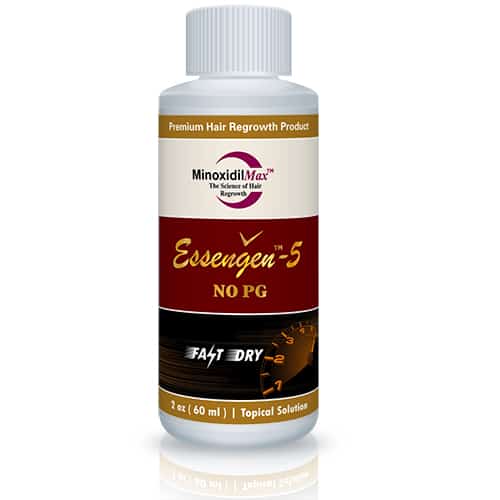
What stands out about this product
- Contains no propylene glycol
- Ideal for men with sensitive skin
- Specially developed for beards but can be used on the scalp
The “No PG” in Essengen means no propylene glycol. That’s good news for people who may experience allergic reactions to propylene glycol, and it’s a good choice overall for men with sensitive skin.
Instead, Essengen-5 uses glycerin, which helps to cut down on skin irritation. While glycerin tends to be greasier and absorbs more slowly into the skin than propylene glycol, Essengen has improved its formulation to make it faster-drying.
Like most minoxidil products, the recommended use for Essengen is 1 ml twice a day while leaving at least eight hours between applications.
Pros
- Ideal for people with propylene glycol allergies or sensitive skin
- It is very easy to use
- Contains 5% Minoxidil
- Ideal for stimulating healthy beard growth
- Women can also use it
Cons
- The product is more greasy because glycerin is used to replace some other products
- It is a bit slow to absorb into your skin
3. Tugain
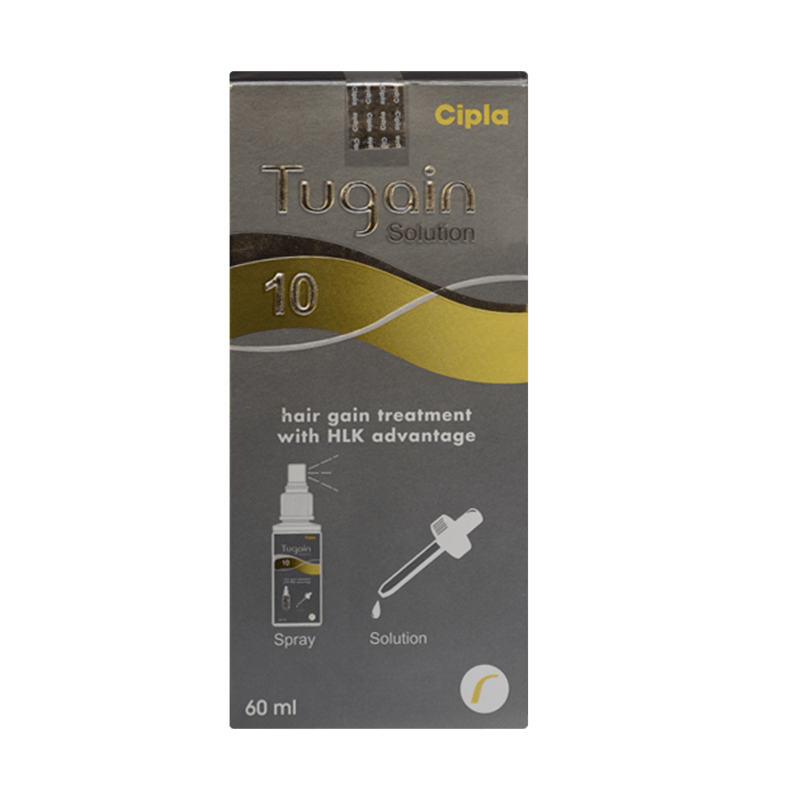
What stands out about this product
- Contains 10% Minoxidil extra strength
- Ideal for beard, scalp, or eyebrows
- Spray or dropper available for easy application
Tugain is an extra-strength product that contains 10% minoxidil. While a 10% solution generally isn’t needed to enhance hair growth, it does exist, and many men use it.
Each order of Tugain includes a two-ounce bottle that will last a month if you use it daily. You need to apply the product twice a day and massage it into the scalp. It comes with a dropper or spray top. Both of these are very convenient for easy application.
Pros
- Easy to use
- Two different application methods for one product
- Contains a massive amount of Minoxidil
- You can use it on different body parts and your beard
- A lot of positive reviews from buyers
- A lot of people get better results from this product than others
Cons
- It is pricey
4. Equate

What stands out about this product
- The set includes a three month supply
- Includes 5% Minoxidil
- Offers quick results
Equate is similar to Rogaine’s extra-strength products in that it comes in a 5% solution. You get three bottles per order, which is enough to last you three months. The solution also nourishes the skin to reduce itchiness and dryness.
Pros
- Easy to use
- A large batch is enough for 3 months
- The product is unscented
- It comes with a dropper
- The extra strength is ideal for boosting follicle regeneration
Cons
- It is more effective for some users than others
Maintaining your beard
It’s important to follow a good beard maintenance regimen, whether you use Minoxidil or not because a healthier, well-maintained beard is one that tends to thrive. So, what tools can help you grow a thicker beard (as you’re taking Minoxidil)? Here’s a look:
1. Beard wash & shampoo
A clean beard is a healthier beard and, besides, who wants a beard that features flecks of yesterday’s lunch, or smells like your friend’s cigarette or cigar? A clean beard helps add to an overall healthy appearance and can help create a better growing environment.
Cleaning your beard with a quality beard wash or shampoo has many benefits, including that it makes your beard soft and manageable.
Cleaning your beard gets rid of dead flakes of skin that turn into beardruff, the facial hair equivalent of scalp dandruff, and it prevents beard itch and other irritations caused by dry skin beneath your whiskers.
The thing to remember is that you shouldn’t use the same shampoo you use on your head to clean your beard.
Shampoo for your hair has two primary purposes, 1) to clean your hair, and 2) to get rid of the oil that makes it look greasy.
It does so by stripping the natural oil (sebum) from the skin. Many shampoos accomplish all this through the use of chemicals.
Beard shampoos, meanwhile, don’t contain harsh chemicals found in regular shampoo because beard manufacturers know that sebum is vital to the overall health of your beard.
The bottom line is that quality beard shampoos clean the grim, leftover food, and other debris from your beard without stripping the skin of much-needed oils. It also helps scrub away dead skin cells that can lead to itching and the dreaded beardruff.
So, as you’re treating your beard with Minoxidil to, hopefully, make your beard thicker and fuller, you should keep it clean and soft as possible, and shampooing it a couple of times of week will help you to do just that.
A beard shampoo that we think you’ll love is Professor Fuzzworthy’s Beard Shampoo. Made in Tasmania, Australia, Professor Fuzzworthy’s shampoo contains all-natural ingredients that aren’t too harsh on facial hair.
2. Beard oil
True beardsmen understand the importance of having a bottle of beard oil in their kit bag.
Beard oil has a long list of benefits, including that it moisturizes the beard and skin, helps to prevent beardruff, and keeps your whiskers soft and thriving.
A beard oil we really like, and think you will, too, is the Honest Amish Classic Beard Oil.
3. Diet
Minoxidil can help your beard thrive and become thicker. So can your diet.
The importance of maintaining a proper diet, whether you’re growing a beard or not, cannot be overstated.
Certain foods can help turn a patchy beard into a fuller one, including foods rich in vitamins A and Beta A carotene, vitamins C and E, B vitamins, foods rich in protein, and Omega-3 fatty acids.
4. Exercise
Like a healthy diet, a regular exercise routine will help your beard to thrive. Among exercise’s many beard benefits is that it improves blood flow, which helps stimulate hair follicles, it increases testosterone, and it boosts metabolism, which can spur hair growth.
5. Reduce stress
It often seems that our lives can become stressful in the amount of time it takes to snap our fingers. Too much stress has damaging effects on our minds, bodies… and facial hair.
Stress, among other things, restricts the flow of vitamins to hair follicles, while hair loss is often a typical response to excess stress.
So, chill out fellas, at least when you can, while engaging in stress-reducing activities such as meditation, exercise, and taking needed breaks along the way.
6. Rest
We all know how it feels after we get a good night’s rest. We also know how it feels when we don’t get enough sleep.
Besides the grogginess, lack of concentration, less productivity that can come with insufficient sleep, it can also lower testosterone and have an impact on facial hair growth. A lack of sleep can also lead to raised stress levels, which has a negative effect on hair loss.
7. Trimming your beard while using Minoxidil
It’s OK to trim and shave (or shape) your beard when using Minoxidil. Minoxidil absorbs well into the skin and shouldn’t pose a problem for trimming your beard. But you may want to keep your trimmer at a lower setting until your beard is full.
FAQ (Frequently asked questions)
How do you apply Minoxidil to your beard?
We discuss the how-to of applying liquid and foam minoxidil in a section above.
In short, you apply the solution to a clean face, using the recommended amount (1 ml), and leave it in for several hours.
You can apply it twice a day, but leave at least eight hours between applications.
How long does Minoxidil take to work?
Many men experience some beard growth within three to six months of taking Minoxidil. Results vary from individual, so don’t become frustrated if growth isn’t evident immediately.
What happens if you stop using Minoxidil on your beard?
Many users say that the gains they’ve made from using Minoxidil last a long while after they quit using it. However, you will probably notice thinning hair the longer you’ve stopped using it.
How long do you leave Minoxidil on the beard?
You should leave Minoxidil on your beard for at least four hours before washing or rinsing it. It’s recommended that you leave at least eight hours between applications.
Where to buy Minoxidil for a beard?
You can purchase Rogaine over-the-counter at most major pharmacies and supermarkets. You can also order it online through Amazon and other vendors.
How fast is Minoxidil absorbed into the beard?
Experts say you should leave Minoxidil in your beard for at least four hours because that will create a 75% absorption rate or higher.
When to wash your face after applying Minoxidil on your beard?
Again, four hours seems to be the magic figure; you should leave it for at least that long to guarantee a satisfactory absorption rate. Don’t wash or rinse your beard until at least four hours have passed.
Conclusion
Many men use Minoxidil to stimulate beard growth while eliminating patchiness that prevents whiskers from reaching their full potential.
The positive results are well-documented, and Minoxidil may be just the thing you were looking for to create a healthier-looking beard.
We’d love to hear from you, too. Do you use a minoxidil product on your beard? If so, which one? What kind of results have you had? We welcome your comments and suggestions.

